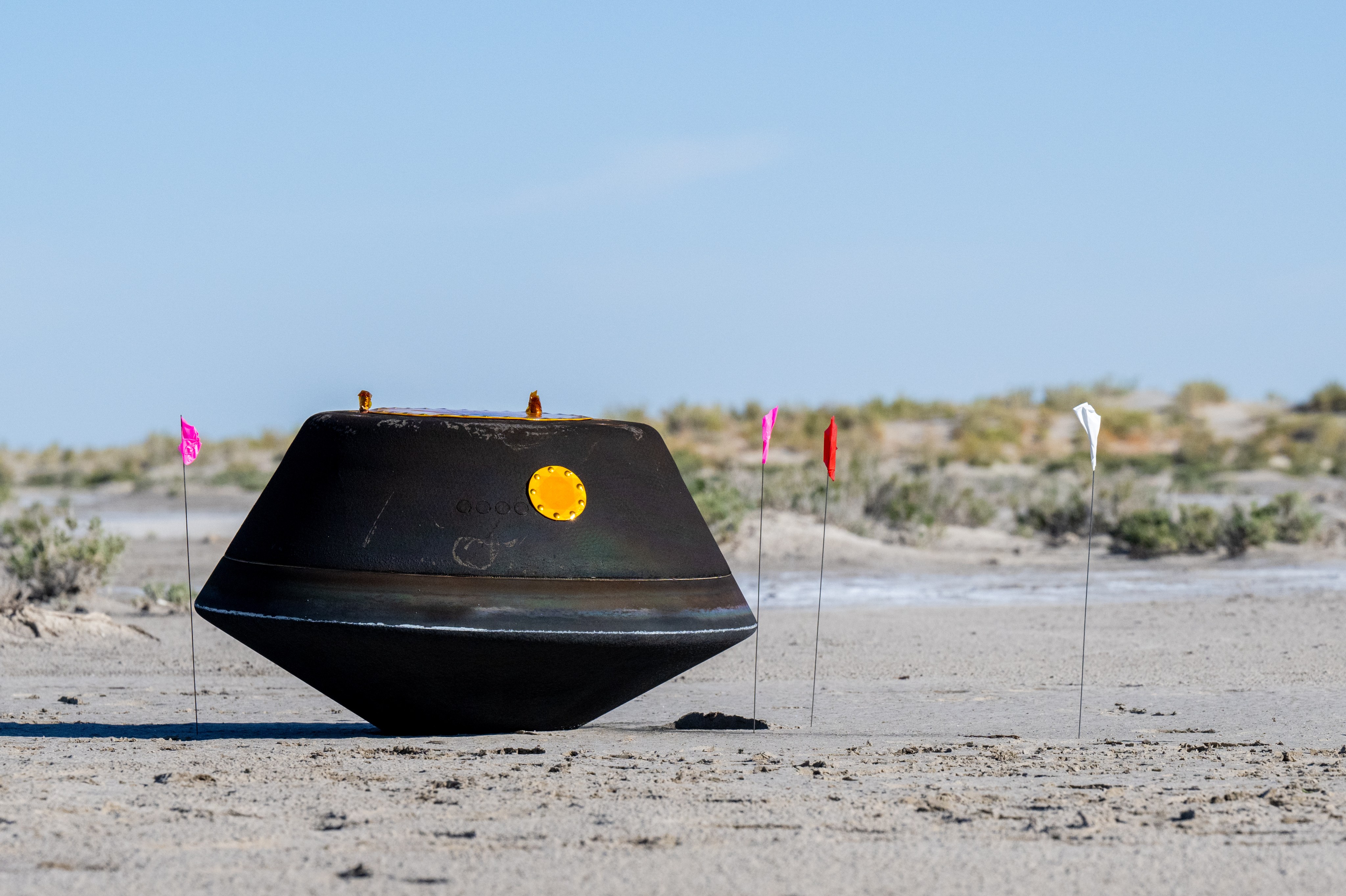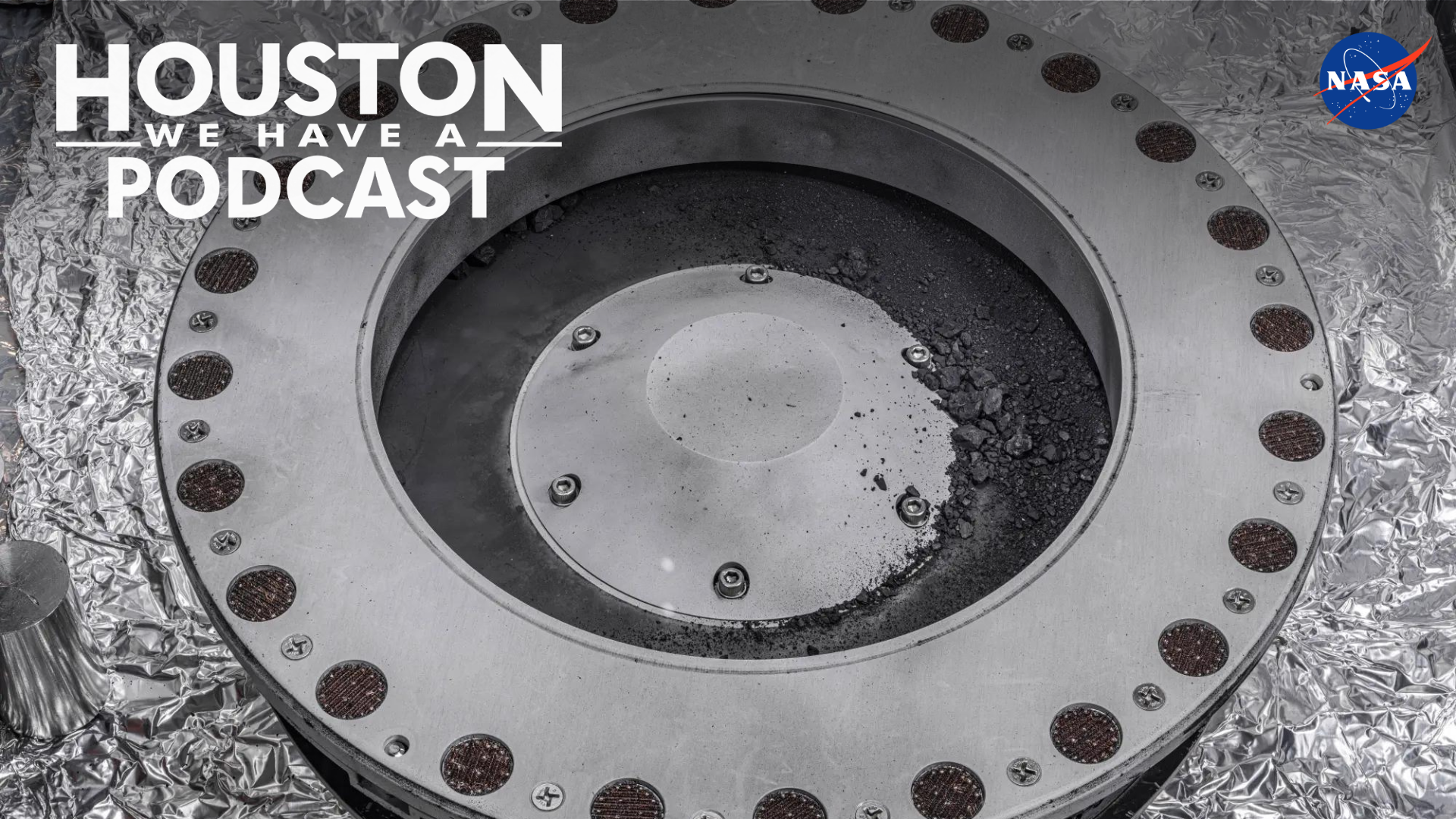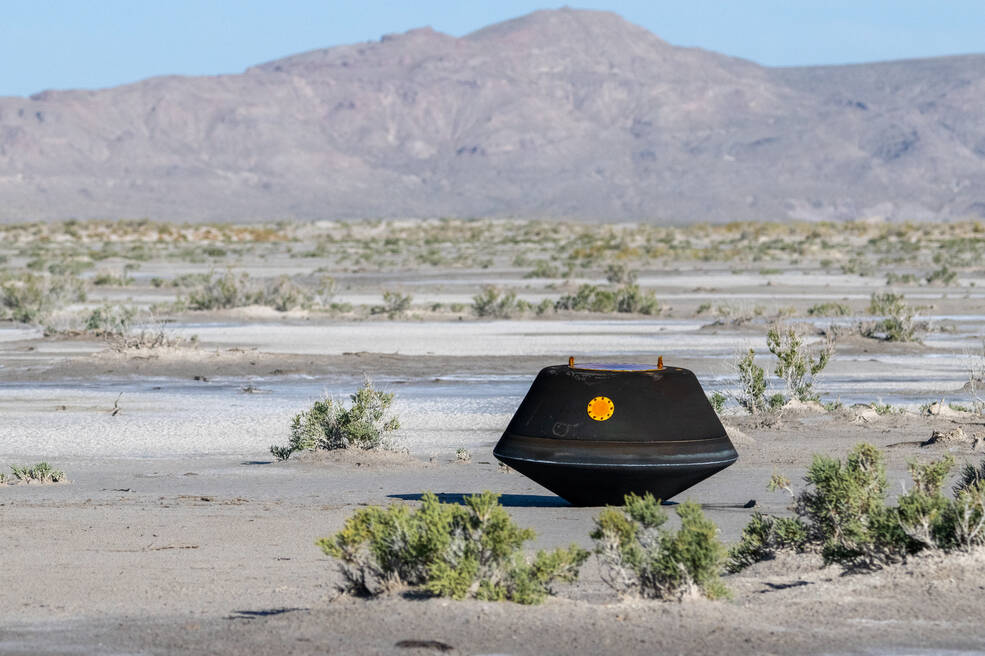


Bennu Exploration
Bennu was the target of NASA's first asteroid sample return mission – OSIRIS-REx. The spacecraft successfully delivered the sample to Earth on Sept. 24, 2023.
Location
Inner Solar System
First mission
OSIRIS-REx
shape
Diamond
Size
1/3 mile wide at its equator
Scientists first caught sight of Bennu on Sept. 11, 1999, with a one-meter telescope near Socorro, New Mexico, during the Lincoln Laboratory Near Earth Research (LINEAR) survey. The asteroid was within 0.05 astronomical units of Earth (about 20 times the distance from Earth to the Moon). One astronomical unit is the distance between Earth and the Sun, equivalent to about 93 million miles.

In 1999, scientists collected data about Bennu through radar imaging and ranging from radio telescopes, and through spectroscopy – a technique to explore the composition of an object by examining the kind of light it reflects.
From 2005 to 2007, when it approached Earth again, various space-based and ground-based telescopes observed Bennu. NASA’s Spitzer Space Telescope measured the temperature and brightness of the asteroid in 2008.
NASA’s Hubble and Spitzer space telescopes, the European Space Agency’s Herschel Space Observatory, and a variety of ground-based observatories focused on Bennu again from 2011 to 2012. These observations helped scientists refine its rotation period and shape. Radio observations from 2011, as well as 2005 and 1999, have enabled astronomers to calculate speeds and distances for Bennu at various times.
The asteroid makes one full orbit around the Sun every 1.2 years. Its trajectory takes it relatively close to Earth every six years. Observations from 1999-2000 and 2005-2006 were especially fruitful because Bennu was so close. The asteroid won’t make another close approach to Earth until 2060.
NASA’s OSIRIS-REx (Origins, Spectral Interpretation, Resource Identification, Security-Regolith Explorer) mission, which launched in 2016, performed the most in-depth exploration of Bennu to date. During its Oct. 20, 2020, sample collection event, the spacecraft collected a 4.3-ounce (121.6-gram) pristine sample of Bennu, exceeding the mission’s requirement of 2 ounces (60 grams). The spacecraft delivered the sample to Earth on Sept. 24, 2023.
Significant Events
- Sept. 11, 1999: The LINEAR survey discovers the asteroid 1999 RQ36.
- 2005-2006: The asteroid makes a close approach to Earth, and scientists observe it with space-based and ground-based telescopes.
- 2011-2012: The asteroid makes another close approach. Radio observations and space observations help scientists define its rotation period and model its shape.
- 2013: A third-grader named Michael Puzio names the asteroid Bennu through a contest.
- 2014: Scientists calculate the mass of Bennu by measuring its thermal properties and how much it deviates from its predicted orbit—the first time that the mass of an asteroid has been found in this way.
- 2016: NASA’s OSIRIS-REx spacecraft launches, en route to study Bennu up close and return a sample.
- 2018: OSIRIS-REx approached Bennu and began to map its surface.
- 2020: OSIRIS-REx collected a sample of material from Bennu’s surface.
- 2023: OSIRIS-REx delivered a sample from Bennu to Earth on Sept. 24, 2023.








